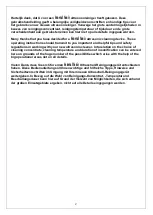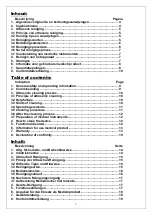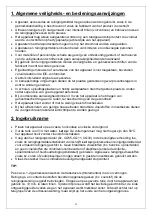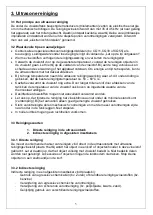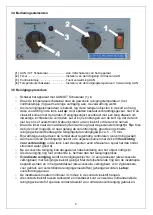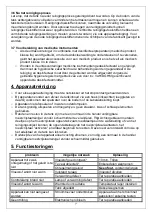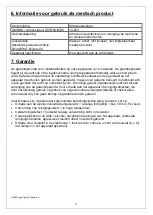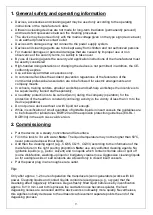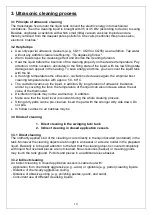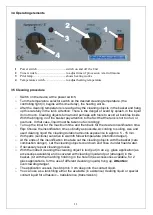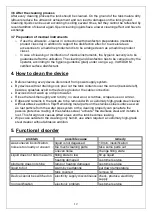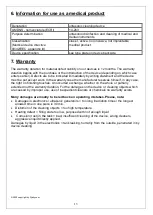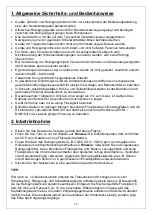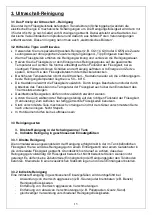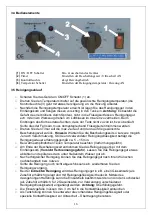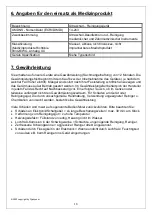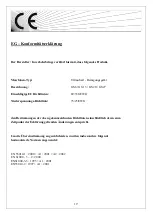
10
3.
Ultrasonic cleaning process
3.1 Principle of ultrasonic cleaning
The transducers fixed under the liquid tank convert the electric energy into mechanical
oscillations. Then the cleaning liquid is brought with 35 or 45 kHz (according to device) to swing.
Besides, originates a cavitation with which small (little) vacuum vesicles implode and are
thereby removed from the deepest pores pollutions. One calls (mentions) this process also „
electronic brushes “.
3.2 Helpful tips
•
Use only special ultrasonic cleaners (e.g., CQ11, CQ33 or CQ55) as an addition. Tap water
without any addition cleans insufficiently. “Tip degassing follow ".
•
Warm liquids raise the cleansing effect and shorten the cleaning duration.
•
Heat the liquid before the insertion of the cleaning property on the desired temperature. Pay
attention, on this occasion, absolutely to the filling state of the liquid, with too low filling state
damages can appear in the heating. To save energy and time, you can cover the liquid tank
with the lid.
•
At too high temperatures the ultrasonic - cavitations decreases again, the empirical best
cleaning temperature lies with approx. 50 - 60°C.
•
The cavitation warms up the liquid, in addition. By long duration of ultrasonic irradiation
and/or by covering the tank, the temperature of the liquid can also increase above the set
value of the thermostat.
•
Disinfection liquids may not be warmed up, in addition.
•
Make sure that the liquid level is constant during the whole cleaning process.
•
Strong dirty parts can be pre-cleaned. Insert the part with the stronger dirty side down. Do
not pile.
•
In hollow cavities no air bubbles may be
3.3 Kinds of cleaning
1. Direct cleaning in the swinging tub / tank
2. Indirect cleaning in closed application vessels
3.3.1 Direct cleaning
The ordinarily applied kind of the cleaning occurs directly in the liquid located (contained) in the
tank. Moreover the cleaning objects are brought in an basket or a device holder in the prepared
liquid. Basically is to be paid attention to the fact that the cleaning object is covered completely
with liquid. Not overcast places are not cleaned. No accessories (basket) or cleaning goods
may touch the tank ground. Put bits and pieces in an additional sieve basket.
3.3.2 Indirect cleaning
An indirect cleaning in closed application vessels is carried out with:
- Application from chemically aggressive (e.g., acids) or ignitable (e.g., petrol) cleaning liquids.
- Distance of chemically aggressive soiling.
- Distance of abrasive soiling (e.g., polishing pastes, quartz, and sand).
- Concurrent use of different cleansing liquids


